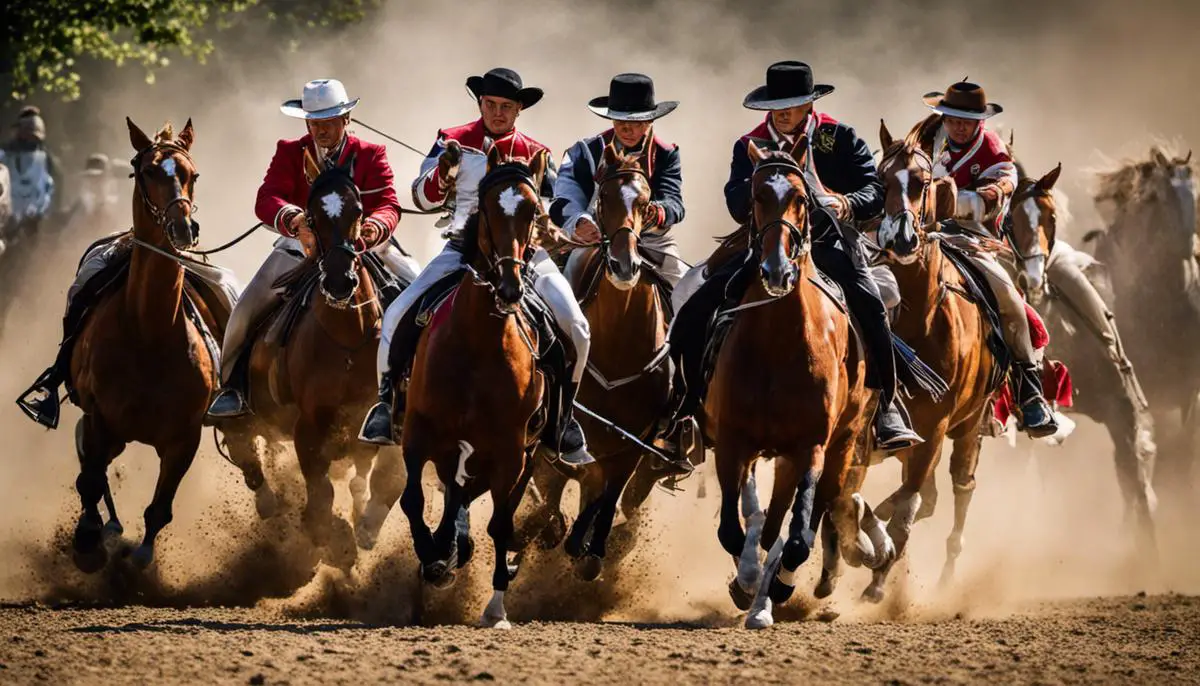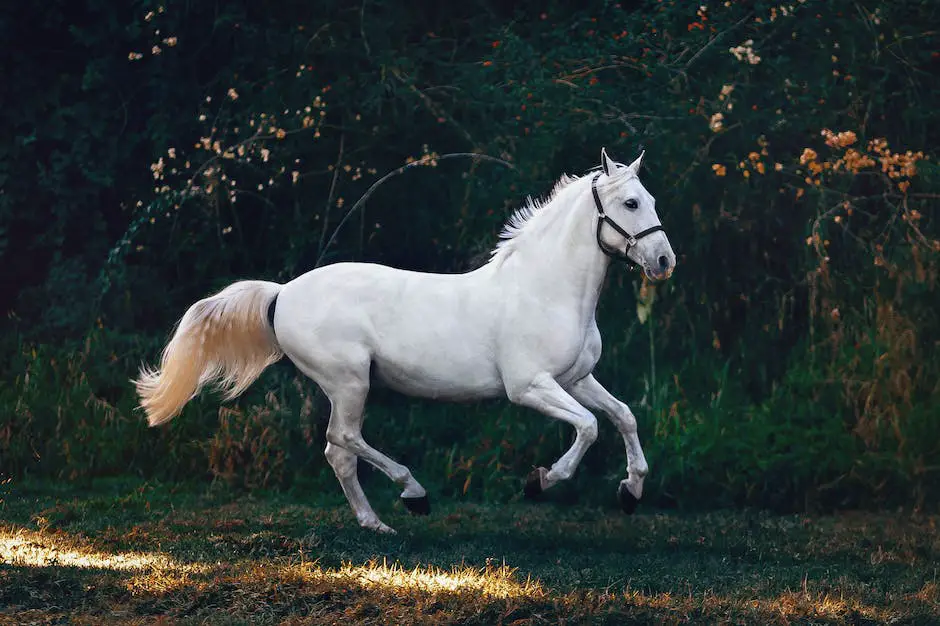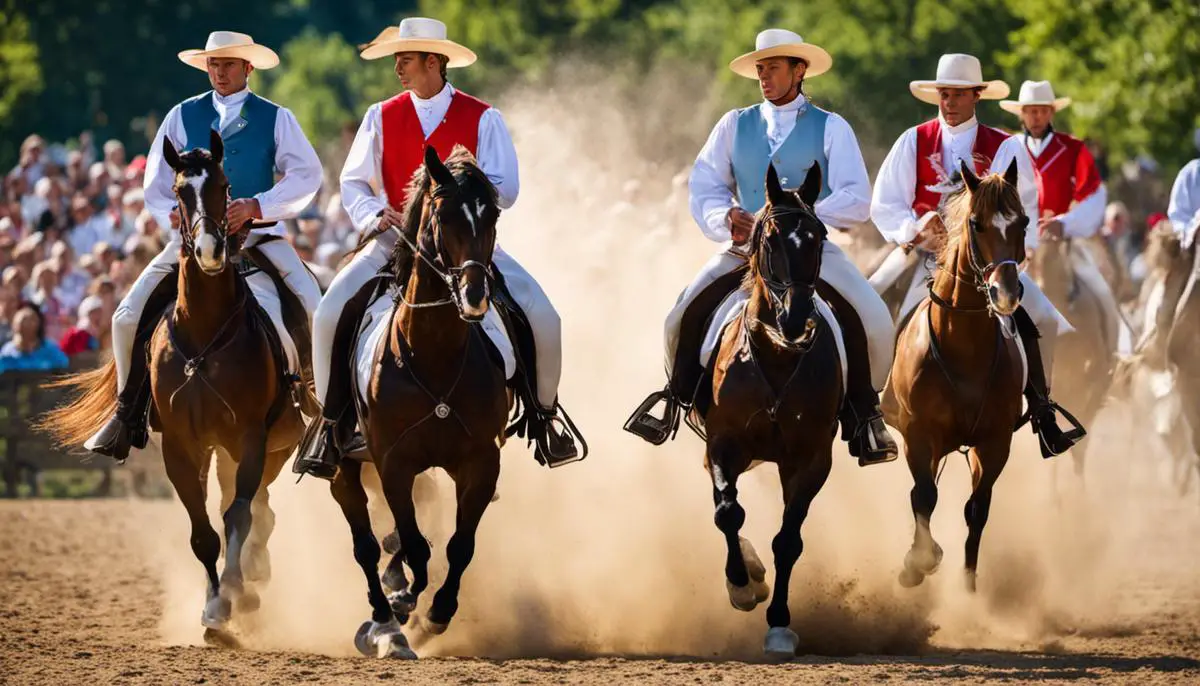Immersed deeply within the rich cultural fabric of Hungary is the time-honored art of horsemanship. For centuries, horses have distilled themselves into the very essence of Hungarian society, being an invaluable resource in matters of transport, warfare, farming, and entertainment – shaping the socio-cultural and economic landscape of the nation. This mystical bond between the majestic beasts and their Hungarian handlers has been cultivated through unique training techniques and styles of horse riding, where the silent communication and synchronized harmony between the horse and rider form a dance as old as time itself. In the heart of this vibrant equestrian culture, lie robust festivals and competitions where the proud traditions of Hungarian horsemanship are displayed, drawing communities closer together. In the modern age, Hungarian horsemanship continues to gallop forward, undergoing a prolific evolution while still reverberating with the echoes of its profound roots.
Table of Contents (Horspedia)
Origins and Traditional Role of Hungarian Horsemanship
Horses have held a critical role in Hungary’s history and culture dating back to the conquest of the Carpathian Basin by the Magyars in the late 9th century. These highly strategic equestrians utilized horse warfare to successfully occupy this territory, and since that time, Hungarian horsemanship has been recognized as a fine art, a tradition, and perhaps even an embodiment of courage and perseverance.
The horse was traditionally seen not just as a tool for work or warfare, but as a companion that shared the struggles and accolities of everyday life in a predominantly agrarian society. Horses were central to agriculture, used in farming for tasks like ploughing and transportation of goods. Hungarian horses were not only functional but also a symbol of status and honor. They were depicted in tales of heroism and bravery, consolidating their significance in the broader fabric of Hungarian culture and heritage.
Hungary is home to several unique and highly valued horse breeds that are deeply engrained in Hungarian culture. One of the most notable is the Hungarian Warmblood, or “Nonius”— a stocky breed known for its strength and endurance. This versatile horse was used not just in agriculture, but in military operations and sport.
Another notable breed is the Shagya Arabian, renowned for its athleticism, versatility, and intelligence. Traditionally, this breed was favored by the nomadic tribes of Hungary who required fast, hardy horses for long-distance travel. Today, Shagya Arabians are esteemed in international equestrian competitions, particularly in endurance events.
The Lipizzaner, although not originally from Hungary, is also strongly associated with the country due to its breed development at the imperial stud at Lipica, and later, in Hungarian state studs. This elegant, high-stepping breed is probably best known for its performances at the Spanish Riding School of Vienna.
In Hungary, horses are held in high regard and are integral to several cultural displays and performances. The traditional Hungarian horse show, “Magyar lovasbemutató,” is a remarkable showcase of the exceptional skills of the Hungarian horsemen and their horses. The performances, which include various riding styles, daring stunts, and plays depicting historical events, demonstrate the enduring bond between horse and rider, resonating with the deep-rooted equestrian heritage of Hungary.
Moreover, horses feature prominently in folklore, mythology, and literature, reflecting their deep-seated roles in Hungarian history, society, and the human imagination. They symbolize key attributes of the Hungarian identity, including freedom, strength, loyalty, and resilience.
The narrative of Hungarian history cannot be separated from the significance of horses; their roles intertwined in a partnership that extends back centuries. Horses were instrumental to the Hungarian way of life, serving in vital capacities such as warfare, agriculture, transportation, and entertainment. The unique Hungarian horse breeds and their integration into the daily life highlight the deep-rooted partnership between man and horse in this remarkable culture.

Training and Techniques in Hungarian Horsemanship
Horses: Cornerstones of Hungarian Historical and Cultural Identity
It’s hard to overstate the importance attached to horses in shaping Hungarian historical and cultural identity. From as far back as the ancient Magyars, forebears of contemporary Hungarians, horses were not just everyday companions but essential lifelines, given the mostly nomadic lifestyle of these early Hungarians. Today, this appreciation and respect for horses—and the horsemanship skills associated with them—continues to thrive, passed down through generations as an honored tradition.
Key Principles of Hungarian Horsemanship
Hungarian horsemanship is deeply rooted in the principles of harmony and communicative partnership. The training regimen is built around two central pillars: understanding the horse’s natural behavior and developing a harmonious relationship. The bond between the horse and its rider is cultivated through mutual respect, trust, and understanding. The ultimate goal is not just to control the horse, but to form a synergy with it, leading to a harmonized movement on its own volition rather than force or coercion.
Hungarian Horse Training Methods
Hungarian horse trainers employ various unique techniques to form a deep bond with their horses. The initial training steps involve groundwork, where the trainers spend time with the horses, understanding their physical and emotional needs. The horse is guided gently, not coerced. This approach fosters trust and respect.
During riding, Hungarian trainers focus on preserving the horse’s natural movement while adding the elements of direction and speed control. They train the horses to respond to subtle signals and weight shifts, intending to create a harmonious movement between the horse and the rider. This style of riding, known as the ‘Hungarian Seat,’ is characterized by a deep, upright posture that allows better control and communication with the horse.
Horse Breeds and Equestrian Sports in Hungary
Hungary stands out with its native horse breeds like the Hungarian Sport Horse and the Hungarian Draft. The Hungarian Sport Horse, recognized for its athletic ability, agility, and strength, is frequently trained for equestrian events such as show jumping and dressage. Hungarian horsemanship skills are also notably visible in traditional equestrian games like horse archery and the Puszta Five Horse Carriage, a thrilling spectacle where a horseman rides a team of five horses simultaneously in complete unity.
Understanding the Vital Role of Hungarian Horsemanship
Hungarian horsemanship genuinely embodies the equestrian culture and heritage of Hungary. Reflecting itself in a plethora of mediums such as equestrian sports, traditional horse displays, and cultural equestrian festivities, this unique approach to handling, training, and showing horses has had a global influence on similar practices. The techniques, which emphasise harmony and synchronicity between horse and rider, inspire and influence enthusiasts and professionals worldwide. This rich lineage of horsemanship, intrinsic to Hungary, almost exemplifies a way of life—signifying the centuries-old association with horses and nature. Not only is it a source of inspiration, but also it facilitates a more profound understanding of the beautiful interplay between equine and human.

Cultural Festivals and Competitions Featuring Hungarian Horsemanship
Tracing the Roots of Hungarian Horsemanship
The roots of Hungarian horsemanship are long and treasured, unfolding alongside the Carolingian horse culture, which was a significant part of the wider equestrian tradition staking its claim across Eurasia and the Middle East. The Magyars, a nomadic tribe that eventually settled in the Carpathian Basin to mark the initiation of what we now know as Hungary, were skilled horsemen. The equestrian skills they mastered weren’t merely sports but were thoroughly embedded in their cultural practices and daily lives.
Ancient Hungarian Horse Festivals and Competitions
Numerous festivals and competitive events highlight the significance of horsemanship in Hungarian culture. The “Nemzeti Vágta” or National Gallop is one festival that embodies this horse-loving spirit. Celebrated annually, the event consists of horse races and folk art performances featuring horses and riders in traditional Hungarian costumes. The competition encourages participation from all regions of Hungary, fostering unity among different Hungarian communities.
The Csikós Tradition
In the Great Hungarian Plains, a region known as the Puszta, a caste of horsemen called Csikós continue to uphold ancient equestrian traditions. Exhibiting exceptional equestrian skills, the Csikós often perform at local festivals, showcasing the famed “Puszta five” where a single rider handles five horses at once.
Modern Equestrian Competitions: Eventing, Show Jumping, and Dressage
Modern Hungarian horsemanship also excels in internationally recognized equestrian sports. Hungarian riders have consistently performed well in eventing, show jumping, and dressage competitions. The annual Budapest Horse Show, which is part of the FEI World Cup, presents a great opportunity for Hungarian riders to demonstrate their horsemanship skills on an international stage.
The Role of Horsemanship in Hungarian Society
In Hungary, the tradition of horsemanship holds a special place, binding communities even in contemporary society. A symbol of Hungarian identity, horsemanship remains a reason for national pride. Its sustenance is ensured by the Hungarian National Equestrian Federation and numerous riding schools nationwide, devoted to imparting this traditional skill to the rising generations. Despite the rapid modernization, the practice maintains its deeply personal and shared nature. It is a living tradition that serves as an emblem of the Hungarian spirit.

Contemporary Hungarian Horsemanship
The Origins and Progression of Hungarian Horsemanship
Horse riding in Hungary, which roots back to the Magyar tribes that founded the nation, stands as a vibrant aspect of its culture. The Magyars, originally nomads, heavily relied on horses for transportation and warfare, establishing a tradition now viewed as a way of life and a reflection of national pride and identity.
Horsemanship, considered an indicator of nobility and rank in traditional Hungarian societies, evolved with the passage of time, adapting to sociopolitical changes, societal demands, and technological breakthroughs. The era of the Austro-Hungarian Empire in the 19th century contributed significantly to this evolution. The transition from horse-drawn artillery to cavalry combat during this period was instrumental in shaping Hungarian horsemanship as we know it today.
Hungarian Horsemanship Today
In today’s society, Hungarian horsemanship has modernized but remains heavily steeped in tradition. The traditional Hungarian riding style, known for its versatility and lightness, continues to be passed down from generation to generation.
Several institutions across Hungary are dedicated to preserving and promoting the traditional equestrian heritage. One of them is the National Riding School in Budapest, known for training future generations in the art and sport of riding. Similarly, institutions like the Hortobagy National Park offer unique ecotourism experiences where visitors get a taste of traditional Hungarian horsemanship.
Challenges Faced by Hungarian Horsemanship
However, Hungarian horsemanship faces multiple challenges today. Modern life and urbanization, with shifting focus from rural activities, has resulted in a decline in the number of people engaged in horse riding. There is a significant cost involved in maintaining horses and facilities for riding, making it inaccessible to many. Additionally, the lack of promotion and awareness of traditional Hungarian horsemanship among the younger generation has also been a major challenge to its survival.
Innovations to Keep Tradition Alive
In response to these challenges, numerous innovative solutions have been put into practice. Institutions and individuals engaged in horse riding are actively promoting equestrian tourism, offering horse riding vacations and holidays which attract both domestic and international tourists. Competitive events such as the long-established National Gallop (Nemzeti Vágta) celebrate Hungarian equestrian culture, while government programs are motivating schools to include horse riding as a part of their curriculum.
Moreover, research and initiatives are being undertaken to improve equine breeds and horse rearing techniques, aiming to improve the quality of horse riding experience while preserving the long-standing horse riding traditions. Various conservation programs are working towards preserving native Hungarian horse breeds, like the Nonius and the Hungarian Warmblood, considered a symbol of Hungarian rural life and equestrian traditions.
Overall Commitment to Tradition
Overall, while modern Hungarian horsemanship has had to adapt and evolve in the face of various challenges, the commitment to preserving this rich tradition is evident, ensuring its survival onto future generations.

Thus, the narrative of Hungarian horsemanship weaves itself from the threads of tradition and the loom of modernity, intertwined with the cultural identity of the nation. The horse is a ubiquitous symbol in Hungary, its strength and endurance mirroring the relentless spirit of the Hungarian people. Centuries-old training techniques continue to mystify and impress, resonating with the timeless appeal of these equine companions. Feel the palpable excitement in the air at festive events celebrating this bond, where a collective Hungarian identity pulses with each hoofbeat. The future of Hungarian horsemanship rises like the dawn, full of potential and illuminated by the enduring touch of tradition, captured in contemporary institutions of learning and evolving societal trends. The stage remains set for the continual gallop of Hungarian horsemanship, bridging the divide between the past and the future, in a symphony of tradition and innovation.

